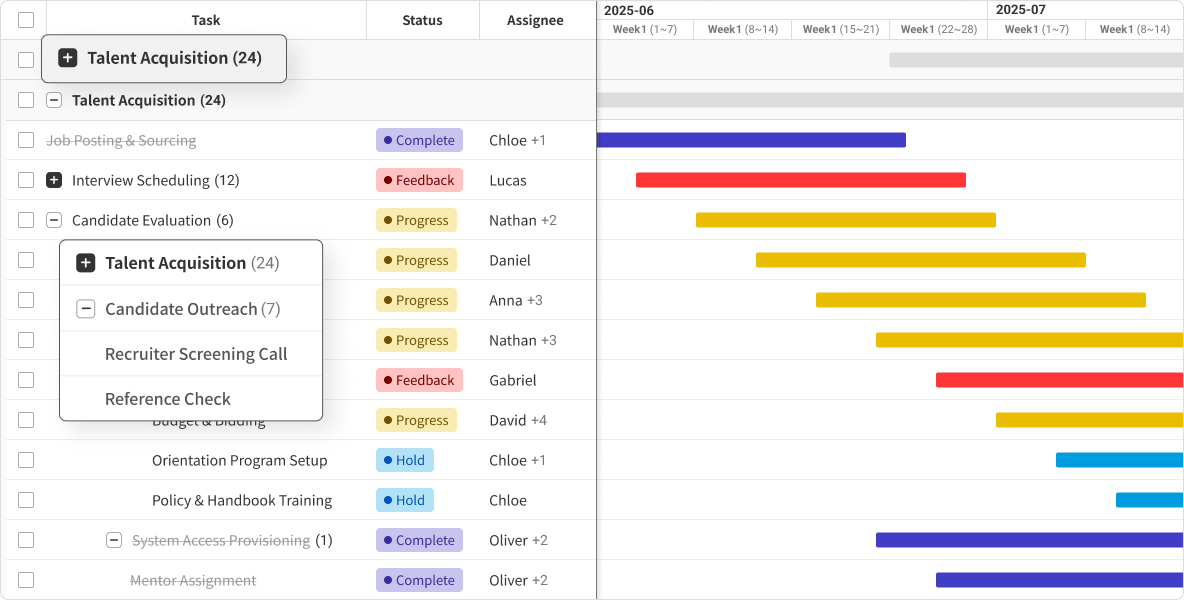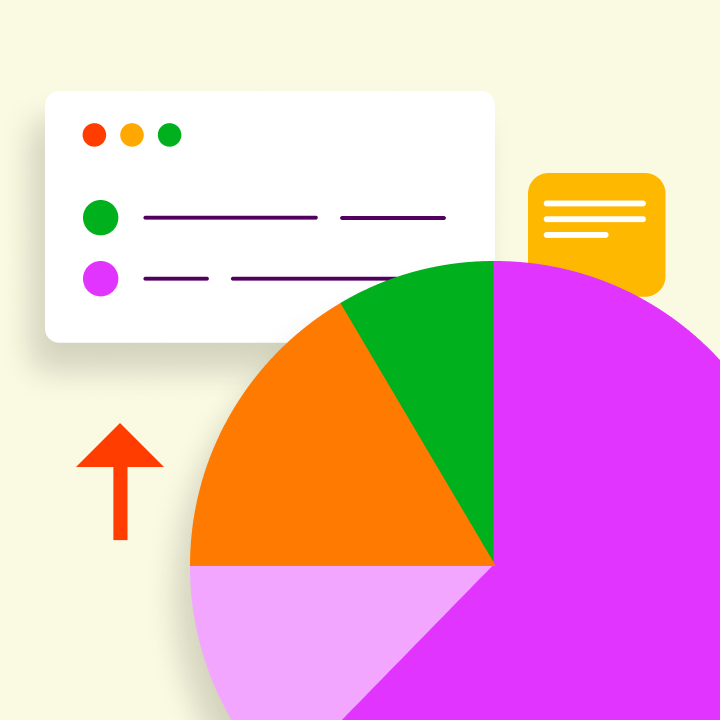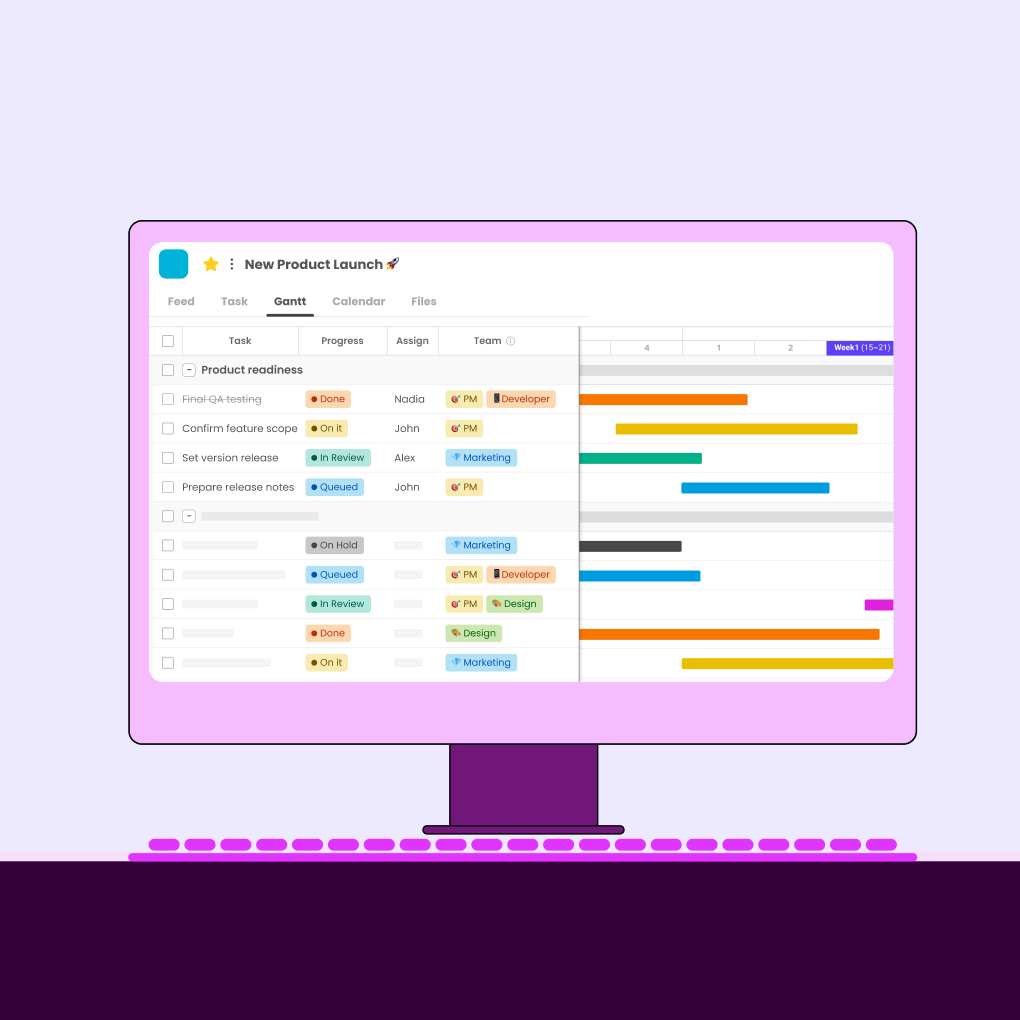When deadlines are frequently changing, team objectives can become unclear, and individuals may often leave meetings, managing projects can feel quite challenging. According to PMI’s report, more than 11% of project spending is wasted due to inadequate performance. This significant loss occurs because organizations often lack the appropriate systems.
Successfully leading a software rollout or infrastructure project requires more than just enthusiasm and task lists. It is crucial to implement established project management strategies that support effective planning, prompt adjustments, and strong leadership. If these techniques are not mastered now, there is a risk of having to produce a failure report instead of completing the project on schedule.
This guide presents 15 essential project management practices that every effective project manager should be familiar with. These practices are utilized by high-performing teams to meet deadlines, manage stress, and achieve their objectives. I am here to assist you in your success.
What Are Project Management Tools and Techniques?
Definition and Differences Between Tools and Techniques
To ensure timely project completion, various tools assist at every stage of the development process. While often discussed together, they serve distinct purposes.
Project Management Software
These are the software, platforms, and hardware that support the organization and monitoring of different project elements. This includes project management software, documentation templates, communication platforms, budget tracking systems, and resource allocation tools.
Project Management Techniques
These methods help managers organize and plan the execution of a project. Common techniques include Waterfall, Agile, CPM, WBS, and Kanban. Each approach outlines how to structure, monitor, and complete project work.
In essence, tools are what you use in project management, while techniques guide how to use them. By leveraging tools effectively, you can implement chosen techniques efficiently and accurately.
Why They Matter in Delivering Successful Projects
Using various project management tools and techniques effectively significantly boosts the chances of project success.
Improved Planning
Techniques provide guidance and foresight, allowing managers to prepare and avoid confusion.
Enhanced Communication
With well-defined processes and appropriate tools, teams can coordinate more easily, keeping all stakeholders informed and aligned with project goals.
Risk Reduction
Effective techniques help identify potential risks early on. Tools then facilitate risk mitigation by alerting teams to changes and providing real-time updates.
Resource Optimization
Aligning techniques with tools enables better management of time, budget, and personnel, ensuring resources are used efficiently.
Increased Project Success Rates
The Project Management Institute (PMI) reports that companies employing structured project management strategies spend about 28 times less than those without such approaches. This highlights the importance of combining the right methods with the right tools.
Successful projects are rarely the result of luck. They stem from careful planning, proactive steps, and the use of appropriate tools to support specific techniques throughout the process.
Traditional Project Management Techniques
Waterfall Model
The Waterfall model is one of the oldest and simplest project management methodologies. It follows a linear, sequential approach where each phase must be completed before the next begins.
Key Features: Clearly defined project phases, comprehensive documentation at each stage, fixed requirements established at the outset, and limited client involvement after initial requirements gathering.
Best Suited For: Projects with well-defined needs that are unlikely to change, highly regulated industries with compliance requirements, manufacturing and construction projects, and initiatives requiring extensive documentation.
While sometimes criticized for its rigidity, the Waterfall model provides clarity and structure, making it useful for projects with fixed specifications.
Critical Path Method (CPM)
Developed in the late 1950s, the Critical Path Method identifies the longest sequence of dependent tasks (the critical path) that determines the shortest project duration.
Execution Steps: List all activities needed for project completion, identify relationships between tasks, estimate the duration of each activity, determine the earliest and latest start and finish times, and identify the critical path where tasks have no float time.
Advantages: Highlights tasks that directly impact the project timeline, helps identify delays that could affect completion, optimizes resource allocation for essential tasks, and provides a visual representation of the project schedule.
CPM is vital for project planning across all sectors, particularly in construction and large infrastructure projects.
Work Breakdown Structure (WBS)
A Work Breakdown Structure organizes the total project scope hierarchically, breaking it into smaller, manageable parts.
Components of an Effective WBS: Deliverable-oriented division of labor, hierarchical structure with increasing detail, adherence to the 100% rule (lower levels must total 100% of higher-level work), basic work packages, and unique identifiers for each component.
Benefits: Establishes a clear scope baseline, improves estimation accuracy, streamlines task assignment, provides a foundation for project planning, and helps prevent scope creep.
The WBS serves as the backbone of the project, linking goals to specific deliverables and activities while enabling more accurate estimations.
Critical Chain Project Management (CCPM)
Dr. Eliyahu Goldratt’s Critical Chain Project Management focuses on resource constraints rather than just task dependencies, addressing the tendency for individuals to pad estimates and delay tasks.
Key Concepts: Eliminates safety margins for individual tasks, creates project and feeding buffers at strategic points, manages resources throughout the critical chain, monitors project health using buffer management, and applies Constraint Theory.
Implementation Process: Create a traditional project network diagram, identify resource constraints and adjust the schedule, determine the critical chain, add project and feeding buffers, and schedule tasks as late as possible. CCPM encourages teams to focus on execution rather than estimation accuracy, often leading to shorter project durations.
PERT (Program Evaluation and Review Technique)
PERT employs statistical methods to analyze task durations and estimate the probability of project completion dates, accounting for uncertainty in time estimates.
PERT Calculation Method:
- Optimistic time (O): Best-case scenario
- Most likely time (M): Normal conditions
- Pessimistic time (P): Worst-case scenario
- Expected time (TE) = (O + 4M + P) ÷ 6
Applications: Complex projects with uncertain durations, high-risk initiatives requiring risk assessment, projects where schedule performance is critical, and programs with multiple interdependent projects.
While more complex than simple duration estimates, PERT provides statistical confidence levels for project schedules, making it particularly valuable in uncertain environments.
Agile and Iterative Methodologies
Overview of the Agile Framework
Agile is a modern approach to project management that emphasizes flexibility, collaboration, and continuous improvement. Unlike traditional methods, Agile enables teams to adapt to changes, maintain regular communication with customers, and deliver projects in small, manageable increments. Its core values prioritize individuals and interactions, working software, and customer collaboration over rigid processes, extensive documentation, and fixed plans.
Agile projects are organized into sprints, allowing teams to adjust their strategies based on feedback. Team members typically manage themselves and share responsibilities, fostering a collaborative environment. Regular retrospectives help teams refine their processes and maintain momentum. Agile is not just a methodology; it shapes how teams approach tasks and collaborate across various industries.
Scrum Methodology
Scrum is a popular Agile framework that combines structure with flexibility. It defines specific roles, ceremonies, and artifacts to guide development. The key roles in a Scrum team include the Product Owner, Scrum Master, and Development Team, each contributing unique skills to the project.
Scrum management involves setting goals during Sprint Planning, providing updates in Daily Standups, reviewing outcomes in Sprint Reviews, and assessing processes in Sprint Retrospectives. Artifacts such as the Product Backlog, Sprint Backlog, and Increment help organize and visualize work.
The first step in Scrum is to create and prioritize the product backlog. Developers work in short sprints, typically lasting two to four weeks, and check in daily to ensure alignment. At the end of each sprint, a functional version of the product is presented to stakeholders for review, followed by a discussion on potential improvements. Initially designed for software development, Scrum is now widely adopted across various industries due to its adaptability and focus on delivering continuous value.
Kanban Boards
Kanban is a visual management tool that helps teams organize their work. Originally developed for manufacturing, Kanban is now widely used in knowledge work where ongoing delivery and process improvement are essential.
This system emphasizes visualizing the workflow, managing the amount of work in progress, and promoting efficient task flow. Teams establish their process policies and regularly use feedback to enhance performance. A Kanban board features cards for each task, designated areas for different stages of work, and limits on the number of tasks allowed at each stage.
Tasks progress from the commitment phase to delivery, allowing teams to identify bottlenecks and maintain a steady workflow. Kanban is particularly effective for support teams and operations that face shifting priorities.
Extreme Programming (XP)
Extreme Programming (XP) focuses on delivering high-quality software and ensuring customer satisfaction. It is particularly suited for projects with complex and evolving requirements. XP employs specific engineering practices to encourage developers to create responsive and robust software.
Key XP practices include pair programming, test-driven development, and maintaining code that is always ready for deployment. The goal is to release small updates frequently, use clear and maintainable code, and regularly refactor to improve quality.
With collective code ownership and a steady work pace, team members collaborate effectively without becoming overwhelmed. This approach results in reliable software and quicker responses to challenges. Many Scrum teams incorporate XP practices to enhance their technical rigor.
Adaptive Project Framework (APF)
The Adaptive Project Framework (APF) is designed for projects that require both discipline and adaptability. By combining traditional project planning with Agile methods, APF is suitable for situations where the main objectives are clear, but the implementation may vary. It supports teams and stakeholders in making necessary adjustments throughout the project.
APF consists of five distinct phases: Project Scope, Cycle Plan, Cycle Build, Client Checkpoint, and Post-Cycle Review. This model emphasizes learning and improvement based on client feedback. At the end of each cycle, teams and clients can reassess and adjust task priorities based on new insights.
APF requires strict change management and increased stakeholder involvement. As long as established limits are respected, teams can adjust their scope to accommodate changes while staying aligned with the organization’s goals. APF is ideal for projects that demand continuous learning and adaptation.
Scrumban
Scrumban combines the structure of Scrum with the flexibility of Kanban, making it ideal for teams seeking to adopt Agile practices or those that prefer a blend of fixed and adaptable workflows.
In Scrumban, teams use the Kanban approach to visualize tasks on boards with limited work in progress, starting tasks when they are ready. While standups and limited iterations may be part of Scrumban, formal sprint planning is typically replaced by on-the-fly planning.
This approach is particularly beneficial for teams involved in production support, maintenance, and projects with fluctuating workloads. Scrumban allows teams to remain flexible like Kanban while retaining some of the structure found in Scrum.
Change & Hybrid Management Techniques
Event Chain Methodology
Event Chain Methodology addresses the uncertainties and complexities often found in rapidly changing project environments. This approach focuses on identifying and managing events that may impact project activities, even if these events are not apparent during the initial planning phase. It’s important to recognize that these events are interconnected and can influence the entire project.
A key component of this methodology is the event chain diagram, which illustrates the relationships between various events and activities. Project managers utilize Monte Carlo simulations to forecast different scenarios. The project team assesses the financial and resource implications of each event by analyzing its position within the event chain. Through event analysis, the team evaluates the impact of each event on the project and measures performance accordingly.
This methodology enhances risk identification early in the process, promotes realistic scheduling, and clarifies how one event can trigger a series of others. By improving risk management, Event Chain Methodology strengthens planning efforts. The use of Monte Carlo analysis provides significant advantages in situations where outcomes are heavily influenced by uncertain factors.
Extreme Project Management (XPM)
Extreme Project Management (XPM) is designed for projects that are unstable, unpredictable, and innovative. Unlike traditional project management methods that emphasize structure, XPM prioritizes people and flexibility. It recognizes that in fast-paced industries, detailed planning may not always be feasible.
XPM encourages a dynamic planning approach that evolves as work progresses and resources are added. This method empowers team members to take ownership of their tasks and fosters collaboration in decision-making, allowing for quick adaptations to new developments. Emotional intelligence plays a crucial role in building strong relationships with stakeholders and within the team.
XPM adjusts its planning timeline based on current risk assessments, allowing stakeholders to engage multiple times throughout the project. This results in outcomes that are sufficiently effective rather than perfect, making it ideal for research initiatives, product innovations, and projects where continuous change is expected.
Process-Based Project Management
Process-Based Project Management ensures that project outcomes align with the organization’s primary goals and strategies. To begin, it’s essential to anchor the project work in relevant organizational processes and establish deliverables accordingly. This connection guarantees that the project directly contributes to enhancing business processes.
With clear goals, performance standards for each process are defined to support quality and efficiency. Teams continuously apply improvement methods to adapt their work as needs evolve during the project. This strategy also considers the project’s overall impact on the organization, facilitating the prediction of broader benefits.
By aligning project objectives with business plans, measuring their impact becomes more manageable, and the results are more likely to endure. This approach simplifies daily operations post-project and encourages knowledge sharing within the organization. Integrating project activities into everyday business practices ensures that projects yield lasting benefits.
Hybrid Methodologies
Hybrid methodologies combine traditional and Agile approaches to leverage the strengths of both systems. Strategies from traditional project management are beneficial for projects that span multiple departments and domains, such as software and hardware. These models aim to blend the stability of conventional methods with the flexibility of Agile.
For instance, Water-Scrum-Fall incorporates traditional project life cycle elements during planning and closing while employing Agile processes during execution. Disciplined Agile Delivery offers a comprehensive framework for decision-making throughout the project lifecycle. In contrast to using a single methodology, Bimodal Project Management allows for different approaches in various project segments.
Effective planning is crucial for implementing hybrid methodologies. It helps allocate project tasks to the appropriate management methods and establishes clear communication standards between teams using different approaches. These methodologies should highlight the progress of both Agile and traditional elements. The organizational structure should support this integrated approach.
Hybrid methodologies are particularly beneficial for organizations undergoing transitions, projects that require both order and flexibility, or teams that need to collaborate effectively. They enable system updates without discarding existing frameworks.
Visual and Structural Tools for Project Planning
Gantt Charts
Gantt charts are vital for project planning. They display tasks vertically, showing when each task starts, ends, and overlaps with others. This bar chart format clarifies the project’s flow, allowing project managers to stay organized by visualizing dates, task relationships, and overall progress.
Typically, a Gantt chart combines a task list with a timeline that illustrates progress over time. The horizontal bars represent each task’s start and finish dates, with their length indicating the expected duration. By using finish-to-start and start-to-start relationships, managers can identify task dependencies. Milestones mark significant moments, and progress bars help track advancement. Assigning resources enables monitoring of team contributions, while graphical elements simplify progress evaluation.
Focus on key deliverables rather than plotting every minor step. Overloading the chart with too many lines can obscure important information. Using color codes for task status and work streams enhances readability. Including milestones keeps everyone aligned on critical dates, and regularly updating the chart ensures accuracy. Adjust the level of detail based on whether the audience is project leaders or team members.
Gantt charts remain a cornerstone of project management, effectively illustrating timelines, tracking responsibilities, and managing resources across various projects.
Project Network Diagrams
Project Network Diagrams emphasize the sequence of tasks rather than just their timing. They clarify how tasks interconnect, enabling managers to assess relationships and devise effective project plans. These diagrams help identify bottlenecks that may hinder progress.
Among the various types of network diagrams, the Activity-on-Node (AON) is the most commonly used. In this format, nodes represent actions, and arrows indicate dependencies between activities. Another type, Activity-on-Arrow (AOA), primarily found in PERT charts, uses arrows to depict activities. Unlike PDX, PDM also accommodates lead, lag, and overlapping dependencies.
These diagrams consist of activity nodes or arrows that outline tasks and their relationships, detailing the order of execution. A schedule highlights the critical path, which includes tasks that impact the project’s duration. Once time information is added, the diagram can facilitate advanced scheduling and help identify potential issues.
Project Network Diagrams are particularly useful for complex projects with numerous dependencies. They streamline the planning process and enhance communication with stakeholders about project progression.
RACI Matrix
The RACI Matrix clarifies roles and responsibilities among project stakeholders, reducing confusion and streamlining decision-making. It defines who is Responsible, Accountable, Consulted, and Informed for each activity.
Responsible individuals carry out the work, while the Accountable person ensures it is completed and has the final say. Consulted individuals provide input, and Informed individuals receive updates on outcomes.
To create a RACI Matrix, start by listing all project activities and participants. Next, assign RACI roles for each stakeholder-activity interaction. Review the matrix to ensure efficient use of time and that each responsibility is assigned to only one team member. After finalizing the matrix, confirm its accuracy with stakeholders and share it with the project team.
RACI Matrices are particularly effective for coordinating across multiple departments or stakeholder groups. They promote clarity, outline expectations, and help everyone understand their responsibilities throughout the project.
RAID Log
A RAID Log addresses four key aspects of project management: Risks, Assumptions, Issues, and Dependencies. It helps project managers identify potential problems, clarify uncertainties, address current challenges, and understand task interdependencies.
A risk is a potential threat that could impact the project, while assumptions are accepted as facts without verification. Issues are challenges that require immediate attention, and dependencies define how tasks are interconnected.
Regularly updating the RAID log is essential as the project progresses. This includes assigning ownership for tasks, tracking status, and documenting initiatives to resolve issues. Reviewing the log during team meetings keeps everyone informed and aligned. Additionally, linking relevant documentation provides context, and prioritizing items highlights the most critical issues.
RAID logs consolidate essential project information, reducing the need for separate notes or discussions. Effective oversight and coordination are crucial in managing complex, long-term projects.
Timesheets and Dashboards
Timesheets and dashboards provide valuable insights into project activity, helping track progress, team allocation, and overall performance. These tools monitor work in real time, and the data collected can inform future project planning.
Team members log their hours on timesheets, which can be compared to estimated task durations. This data enables better forecasting, resource management, budget control, and identification of areas for process improvement.
Dashboards display key performance indicators in one view. They often rely on the Schedule Performance Index (SPI) and Cost Performance Index (CPI) to assess project health. Monitoring risk indicators and resource charts helps identify problem areas and understand the relationship between resources and team responsibilities. Milestone tracking ensures that critical dates are met and that completed work meets quality standards.
An effective dashboard provides immediate insight into project progress, allowing managers to make informed decisions and intervene quickly if plans deviate.
How to Choose the Right Tools and Techniques
Assessing Project Complexity and Team Size
Selecting the appropriate project management methods begins with a thorough evaluation of your project’s characteristics:
Complexity factors to consider: Number of dependencies, technical uncertainty, stakeholder diversity, regulatory requirements, geographic distribution, and organizational maturity.
Team size considerations:
- Small teams (2–10): Lightweight tools with minimal overhead.
- Medium teams (11-25): Structured frameworks with defined roles.
- Large teams (26+): Scaled methodologies with coordination mechanisms.
Strategy matrix approach:
Rate your project on key complexity criteria using a 1-5 scale, calculate the total score to identify the appropriate methodological category, and consider team size adjustments to refine your selection.
More structured approaches typically benefit complex projects and larger teams, while simpler projects and smaller teams thrive with more flexible methods.
Matching Methodologies to Project Phases
Different methods and tools are suited for various project phases:
Initiation Phase: Stakeholder analysis tools, business case templates, project charter frameworks, feasibility study methods.
Planning Stage: Work Breakdown Structure (WBS) development, network diagramming, resource leveling techniques, risk assessment systems.
Execution Stage: Agile methodologies for iterative delivery, visual management boards, daily standup meetings, quality assurance systems.
Conclusion Phase: Retrospective methods, knowledge transfer templates, benefits realization frameworks, lessons learned methods.
Many successful projects adopt a hybrid approach, blending traditional planning and closing techniques with agile methods during execution.
Aligning Tools with Stakeholder Needs
To ensure adoption and deliver value, project management tools must meet stakeholder requirements:
Key stakeholder considerations:
- Executive sponsors: Focus on strategic alignment and high-level reporting.
- Team members: Emphasize usability and workflow support.
- Consumers: Provide visibility and feedback mechanisms.
- Functional leaders: Aid in forecasting and resource management.
- Regulatory bodies: Ensure compliance through audit logs and documentation.
Alignment strategies: Identify key stakeholder groups and their primary concerns, map these concerns to specific tool features and methodologies, create tailored views and reports for different stakeholders, regularly solicit feedback on tool effectiveness, and adjust strategies based on stakeholder engagement patterns.
Remember, the ideal approach balances theoretical soundness with practical usability—ensuring stakeholders are willing to engage with the tools.
Implementation Tips and Best Practices
Standardize Tools Across Teams
Ensuring your company uses a consistent set of tools offers numerous benefits:
Advantages of Standardization:
- Lower training costs
- Enhanced collaboration between teams
- Uniform reporting and analytics
- Improved resource allocation
- Simplified vendor management
- Sharing of best practices and knowledge
Execution Steps: Start by assessing your current tools and methods. Identify key needs across projects, select primary and secondary tools or frameworks, and create a phased execution roadmap. Develop standard templates and configurations, and establish a governance structure for any exceptions.
While standardization boosts efficiency, it also allows for justified exceptions when project requirements truly call for different approaches.
Train for Methodology Alignment
Even the best methodology can falter without proper understanding and commitment from the team:
Training Elements: Cover fundamental concepts and terminology, conduct practical application workshops, offer role-specific training modules, develop tool proficiency, and provide certification paths when applicable.
Knowledge Transfer Methods: Use formal training sessions, mentorship programs, communities of practice, internal knowledge bases, regular refresher courses, and hands-on application exercises.
Training should focus not only on how to follow processes but also on why they are important—linking methodologies to meaningful outcomes rather than mere compliance.
Monitor KPIs and Improve Iteratively
Continuous improvement hinges on measuring the effectiveness of your methodologies and making necessary adjustments:
Key Performance Indicators: Track on-time delivery rates, budget variances, scope stability, defect and rework rates, team velocity, customer satisfaction scores, and resource utilization.
Improvement Process: Establish baseline measurements, set improvement goals, consistently collect data, analyze trends, implement targeted changes, measure their impact, and standardize successful improvements.
A data-driven approach to refining methodologies replaces subjective discussions with objective assessments, leading to ongoing optimization of your project management practices.
Conclusion: Strategically Integrating Tools and Techniques
The most effective project management strategies do not rely on a single methodology or tool. Instead, they strategically combine various techniques to meet specific project needs. Rather than getting caught up in debates like “Agile versus Waterfall,” successful project managers build a flexible toolkit that can be applied as needed.
Consider developing a project management playbook for your organization. This playbook should map specific tools and techniques to common project scenarios, provide decision-making frameworks for selecting methodologies, establish minimum standards while allowing for customization, and document lessons learned to continuously improve practices.
Remember, project management tools and techniques are means to achieve successful project delivery, not ends in themselves. The most sophisticated methodology is ineffective if it doesn’t help your team deliver value to stakeholders efficiently and effectively.
Ready to enhance your project management approach? Begin by evaluating your current methodologies against the techniques outlined in this guide. Identify gaps in your toolkit and experiment with new strategies in upcoming projects. Keep in mind that mastery comes through practice—the best project managers continually refine their techniques through real-world experience.

Put this into practice with a free trial of Morningmate—centralize plans, timelines, and cross‑team collaboration so your flexible toolkit actually delivers results.




